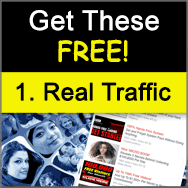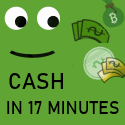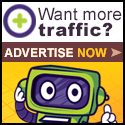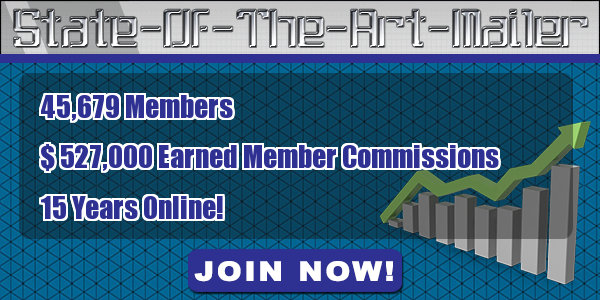» Leads Leap
» EasyHits4u
» MONEY MAKER SAFELIST
» WORK FROM HOME
» TOP Dogs Rotator
» howtomarket
» Uncle Toad's $5.00 Rotator
» Free Associate Membership
» Get 20+ Income Streams
» 7PLR-Ebook-Bundle
» A.I. YouTube Master Class eBook
» Super Solo Ads
» Extreme Traffic Pack
» 18 Memberships FREE for LIFE
» Clickbank Super Store
» FREE E-BOOK FACEBOOK MARKETING
» Solo Blast To 30,000 FREE
» Public Domain Treasures
» Video Funnel Building Course
» Niches
» Affiliate Marketing Course
» Internet Marketing For Newbies
» FREE Classifieds
» Article Directory
» Promote To ONE Million
» 30,000 FREE AD Credits a month
» 50,000 TO YOUR WEBSITE
» EPIC TRAFFIC GIVE AWAY!
» DRIVE 100,000 to your website

Here is a breakdown of the most cost-effective methods, from foundational to scalable.
The Bedrock: Your Non-Negotiable Foundation (Highest ROI)
These aren't just advertising tactics; they are assets you build that pay dividends for years. They have the highest long-term ROI.
1. SEO-Driven Content Marketing
This is, without a doubt, the #1 most cost-effective strategy. You invest time upfront to create content that attracts free, highly-targeted organic traffic from search engines like Google for months or even years.
Your Goal: Become the go-to resource for a specific problem that your digital product solves.
Cost-Effective Content Types for Digital Products:
-
Problem/Solution Posts: "How to Create a Professional-Looking Website Without Knowing Code." (Promotes a website builder affiliate). MasterHomeBiz.com
-
In-Depth Product Reviews: Go beyond the feature list. Buy the product, use it, and document your experience with screenshots, videos, and a genuine list of pros and cons. This builds immense trust.
-
"Best X for Y" Comparison Posts: "The 5 Best Email Marketing Services for Small Businesses." Compare features, pricing, and usability, then clearly state your top recommendation. These are money-makers.
MasterHomeBiz.com/worldprofitaff -
"Product A vs. Product B" Posts: Pit two popular digital products against each other. People actively search for these comparisons when they are close to making a buying decision.
-
Tutorials and "How-To" Guides: "A Step-by-Step Guide to Setting Up Your First Online Course with [Product Name]." This shows the product in action and provides immense value.
Best Way to use A.I.
Cost: Primarily your time. Minimal cost for keyword research tools (free versions of Ahrefs/SEMrush or low-cost tools like Keysearch are fine to start).
Tier 1: The Best "Free" & Low-Cost Amplifiers
Once you have some foundational content, use these methods to get more eyeballs on it without spending on ads.
2. Building an Email List MasterHomeBiz.com
An email list is the single most valuable asset you can have. It's a direct line to your audience that you own (unlike social media followers).
-
How to Build It Cost-Effectively: MasterHomeBiz.com
-
Lead Magnets: Create a simple, valuable freebie related to your content. Examples: a checklist, a short ebook, a "top 10 tools" PDF, or a free email course.
-
Use Free/Freemium Tools: Services like MailerLite or ConvertKit have generous free plans for your first 1,000 subscribers.
-
-
How to Use It:
-
Send a weekly newsletter with your best content and helpful tips.
-
Build trust by providing value consistently.
-
Promote your affiliate offers within your valuable content (soft sell).
-
Run occasional dedicated promotions (hard sell).
-
Cost: Free to start.
3. Active Community Engagement (Guerrilla Marketing)
Go where your target audience already hangs out and become a helpful, respected member.
-
Platforms:
-
Reddit: Find subreddits related to your niche (e.g., r/podcasting, r/freelance, r/smallbusiness). Answer questions genuinely and in-depth.
Do not spam your links. Put your website in your profile bio. Occasionally, when highly relevant, you can mention a blog post you wrote that solves the person's exact problem. -
Quora: Find questions related to the problems your affiliate products solve and write thoughtful, comprehensive answers. You can link to your relevant articles as a resource.
-
Facebook Groups: Find active, well-moderated groups in your niche. Participate, help people, and build a reputation.
-
Niche Forums: If your industry has old-school forums, they can be a goldmine of highly engaged users.
-
Cost: Time only. The key is to give 90% of the time and take 10%.
4. Strategic Social Media
Don't try to be everywhere. Pick one or two platforms where your audience lives and be consistent.
-
For Digital Products, these often work best:
-
Twitter/X: Great for networking, sharing quick tips, and linking to your blog posts. Engage with influencers and the companies you are an affiliate for.
-
Pinterest: If your niche is visual (e.g., graphic design, website templates, productivity), Pinterest is a search engine. Create attractive pins for every blog post.
-
LinkedIn: Perfect for B2B digital products (software, business courses). Post thoughtful text-based content and articles.
-
YouTube: The second-largest search engine. Creating video versions of your reviews and tutorials can be incredibly powerful, embedding your affiliate links in the description.
-
Cost: Time only.
Tier 2: Smarter, Scalable (But Higher Cost) Strategies
Only move to these once you have revenue coming in and you've mastered the free methods.
5. Guest Posting & Collaborations
Leverage the audience of other, more established websites in your niche.
-
How it Works: You write a high-quality article for another blog for free. In return, you get an author bio with a link back to your website.
-
Benefits:
-
Drives referral traffic from a trusted source.
-
Builds powerful backlinks, which is rocket fuel for your SEO.
-
Establishes you as an authority in your space.
-
Cost: Time only, but requires outreach and excellent writing skills.
6. Strategic & Limited Paid Ads
Paid ads are generally NOT the most cost-effective way to start, but one type can be:
-
Retargeting Ads: This is the most cost-effective form of paid advertising.
-
How it works: You install a tracking pixel (e.g., Facebook Pixel) on your website. You can then run very cheap ads (e.g., $5/day) on Facebook or Instagram that are only shown to people who have already visited your website.
-
Why it's effective: You're advertising to a "warm" audience that already knows who you are. You can show them an ad for the specific review page they read, reminding them to make a purchase.
-
A Simple, Cost-Effective Action Plan
-
Month 1-3: Foundation
-
Choose a very specific niche.
-
Do keyword research to find 10-15 "money" keywords (reviews, comparisons).
-
Write and publish 5-10 high-quality, SEO-optimized articles based on those keywords.
-
Create a simple lead magnet and set up your email list.
-
-
Month 3-6: Amplification
-
Pick ONE social media platform and start posting consistently, linking back to your articles.
-
Spend 30 minutes a day engaging in ONE relevant community (e.g., a subreddit).
-
Continue publishing 1-2 new articles per week.
-
Start sending a weekly email to your growing list.
-
-
Month 6+: Scaling
-
Your early articles should start getting some organic traffic.
-
Start pitching guest posts to other blogs.
-
Once you have 1,000+ monthly visitors, install a Facebook Pixel and consider a small ($5/day) retargeting campaign.
-
Analyze which posts are driving the most affiliate clicks and create more content around those topics.
-
By following this hierarchy, you build a sustainable, profitable affiliate business on a foundation of assets you own, rather than constantly paying to rent an audience.
Marshall McLeod (aka) Uncle Toad
270-519-6244
» Gospel of Jesus
» State-Of-The-Art Mailer System
» Mister Safelist
» Herculist
» Email My Ads
» Dragon Safelist
» SafelisteXtreme
» Post Ads View Ads
» Money Maker Safelist
» One Year silver Membership
» HerculistPlus
» 250,000 ad credits
» HOME
» Instant Traffic Generation
» Uncle Toads newsletter
» fiftythousand
» Bitcoin Ad Exchange
» Our BEST Programs
» PLR & eBook Store










